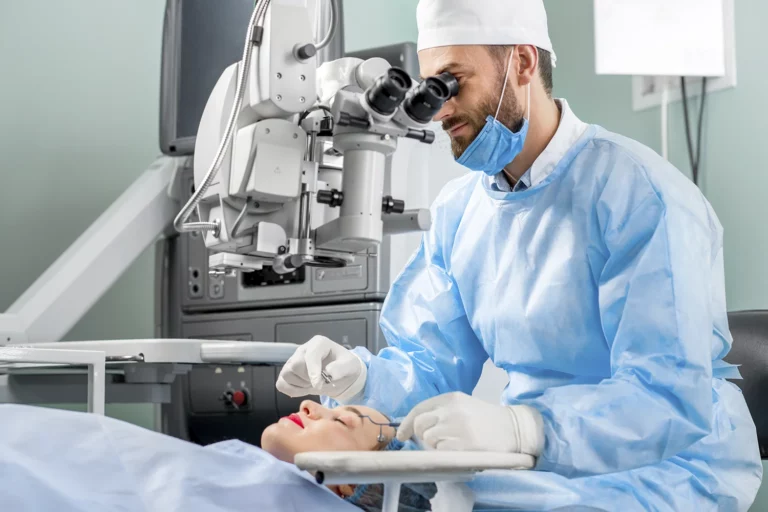Introduction to the Procedure
The gastric sleeve, also known as sleeve gastrectomy, is a weight loss surgery aimed at helping individuals reduce their food intake by reducing the size of the stomach. This procedure involves the removal of a significant portion of the stomach, leaving a tube-like or “sleeve” structure that limits how much food the patient can consume. This not only restricts the quantity of food intake but also influences hormones related to hunger and satiety, contributing to weight loss. It is an effective and popular option for those struggling with obesity and its related health issues.
Stages of the Procedure
The gastric sleeve surgery is usually performed laparoscopically, which involves small incisions and a camera for precision. It generally follows these stages:
- Anesthesia: The patient is placed under general anesthesia to ensure comfort and safety throughout the procedure.
- Incisions: Several small incisions are made in the abdomen, allowing the surgeon to insert the laparoscope and surgical instruments.
- Reshaping the Stomach: Around 75-80% of the stomach is removed, creating a banana-shaped sleeve. This limits food intake and helps reduce hunger hormones.
- Closing the Incisions: The remaining stomach is sealed with surgical staples, and the incisions are closed with sutures or surgical glue.
The surgery usually takes 1-2 hours, followed by a short recovery period in the hospital.
People Eligible for the Procedure
Not everyone qualifies for gastric sleeve surgery. It is typically recommended for individuals who:
- Have a body mass index (BMI) of 40 or higher (severe obesity).
- Have a BMI of 35-39.9 with serious health conditions like type 2 diabetes, hypertension, or sleep apnea.
- Have tried non-surgical methods of weight loss, such as diet and exercise, without long-term success.
- Are mentally and physically prepared for the lifestyle changes required after surgery.
A thorough evaluation by a bariatric surgeon, including psychological and nutritional assessments, is necessary to determine eligibility.
Preparation Before the Procedure
Before undergoing gastric sleeve surgery, patients must follow specific guidelines to ensure the procedure goes smoothly:
- Medical Evaluation: Blood tests, imaging, and other health screenings are conducted to evaluate the patient’s overall health.
- Dietary Changes: Patients are usually placed on a special pre-operative diet to reduce liver size and facilitate surgery.
- Lifestyle Adjustments: Smoking cessation and alcohol reduction are typically required weeks before surgery. Patients should also begin adopting a healthier diet and exercise regimen.
- Psychological Preparation: Many clinics provide counseling to help patients mentally prepare for the post-surgery lifestyle changes.
- Pre-Operative Instructions: Patients will need to fast for at least 12 hours before the surgery and follow the surgeon’s specific guidelines on medications.
Instructions After the Procedure
After gastric sleeve surgery, recovery involves careful adherence to post-operative instructions to ensure proper healing and effective weight loss:
- Diet: Patients will start on a liquid diet for the first few weeks and gradually transition to pureed and soft foods before resuming regular eating. Meals must be small, nutrient-dense, and low in fat.
- Physical Activity: Light walking is encouraged after surgery to promote circulation, but strenuous activities should be avoided for at least 4-6 weeks.
- Hydration: Drinking plenty of water is crucial to avoid dehydration, though sipping slowly is advised due to the reduced stomach capacity.
- Follow-Up: Regular follow-up appointments are essential to monitor progress, ensure proper nutrition, and adjust medications if needed.
- Lifestyle Adjustments: Patients must permanently alter their eating habits, focusing on high-protein, low-carbohydrate meals. Overeating can lead to complications such as vomiting or stretching of the stomach.
The Result
The results of gastric sleeve surgery can be life-changing. Most patients experience significant weight loss within the first year, typically losing 50-60% of their excess weight. Beyond aesthetic improvements, this surgery can dramatically reduce the risk of obesity-related conditions, such as type 2 diabetes, high blood pressure, and sleep apnea. However, success depends heavily on the patient’s adherence to a healthy lifestyle, including proper diet and regular exercise. Many patients also report an improvement in mobility, self-esteem, and overall quality of life.
Why the Procedure at Royal Clinic in Turkey
Choosing Royal Clinic in Turkey for gastric sleeve surgery offers several advantages:
- Experienced Surgeons: Royal Clinic is home to a team of highly qualified bariatric surgeons with extensive experience in performing gastric sleeve surgeries.
- Advanced Facilities: Equipped with state-of-the-art medical technology, Royal Clinic ensures that patients receive top-notch care during and after surgery.
- Affordable Pricing: Turkey is renowned for offering high-quality medical procedures at more affordable rates compared to other countries, making it a popular destination for medical tourism.
- Comprehensive Care: Royal Clinic provides a holistic approach to bariatric surgery, including pre-operative assessments, personalized post-operative care, and nutritional guidance to ensure long-term success.
- Medical Tourism Support: The clinic offers packages for international patients, including travel arrangements, accommodation, and language assistance, ensuring a smooth and comfortable experience.
Gastric sleeve surgery at Royal Clinic in Turkey not only promises excellent medical care but also provides patients with the support they need for a successful weight loss journey.





